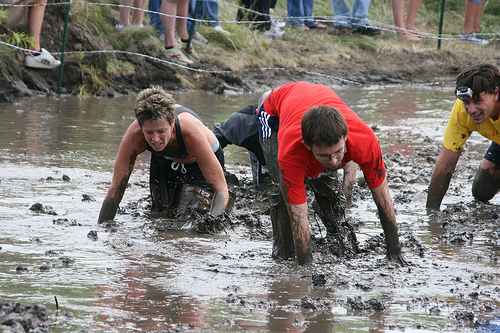About a month ago, I played in a charity softball game. My old high school hosted a game between the 1993 State Baseball Champs (that was us) and the 2010 State team. I expected to go out, beat up on the young guys for a bit, have some fun, and catch up with old friends. What I didn’t expect was to severely pull a muscle around my rib cage on the last swing of my first at bat!
Aside from the pain that throbbed when I walked, and more so when I jogged, I couldn’t understand why it happened. As you can imagine, most of the folks from our old team aren’t in what I would call an “athletic prime” anymore, but I’m expected to be in shape. I’m in the military, a personal trainer, and I have a consistent and smart workout regimen. I understand the importance of the core in generating force and I focus on the trunk muscles individually and through functional exercises.
Then today it hit me…I train those muscles to generate force, not necessarily to stop forces that act upon them. Here’s what I mean – consider an individual who can squat an enormous amount of weight. Can that same person safely control his body weight with his leg muscles as he impacts the floor from a depth jump? Truly functional fitness is not only the ability to generate force, it’s also the ability to control the way your body moves and stops movement to prevent injury.
Not regularly swinging a bat, the adrenaline of the moment, the “Uncle Rico Syndrome” (Napoleon Dynamite reference)…all of these factors played into an excess generation of swinging force that my trunk muscles weren’t used to handling. Hence, a strained muscle around the rib cage.
So how do we train on what I call “the other side” – that side of the weight lifting spectrum that controls weight and momentum vs. generating force? One way is through “negative” lifting. Have a partner help you with the lifting portion of the movement, and then you slowly (performing a 10 count) let the weight down. Eight to twelve reps is usually enough to feel a burn on a set of negatives.
Plyometric pushups and depth jumps are other examples of controlling your body weight while gravity is acting to pull it down. Agility training, where you must stop your body’s momentum in a given direction and move into another direction, is yet another way to practice body control and stopping.
To prevent an injury like the one I had, build your torso muscles by standing with your side to a wall, 2-3 feet away. Hold a rubber medicine ball at your chest and use rotational force (twisting your torso) to throw the ball against the wall. Your muscles must act to stop the twisting motion and catch the ball as it comes back off the wall. Start slowly with a light weight and gradually increase the weight and your distance away from the wall.
In case you’re wondering the outcome of the softball game, the old timers were victorious. As I told my wife, softball is a man’s game, not a teenager’s game. But I will say it’s a good thing we didn’t play hardball – I can’t imagine the young bucks would have had much mercy on us!
 Need Motivation? Try an Event!
Need Motivation? Try an Event!